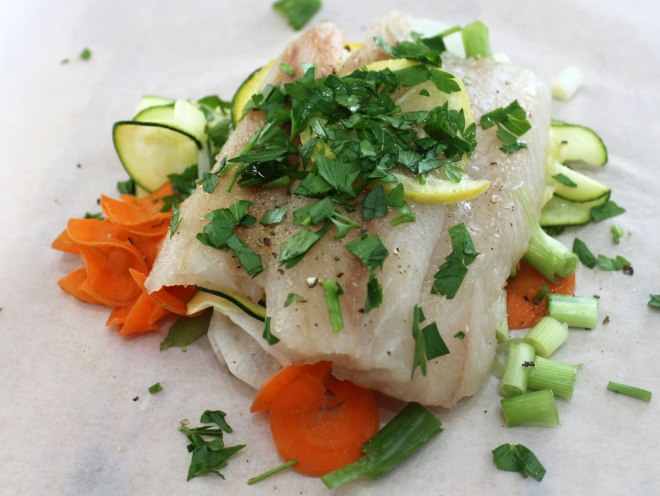BBQ sauce is a hard condiment to substitute for when you are following the Auto Immune Protocol – Tomatoes are out, chilli is out. What can you eat with your ribs, burgers and wings?
I came up with this fruit based BBQ sauce that I served with ribs for one of the girls birthdays.
It was based on some frozen saskatoon berries and some frozen peaches that I had in the freezer. If you cannot find saskatoon berries, you could substitute another type of berry – blueberries might make a good substitution.
This sauce does not have quite the same spicy tomato flavour as a traditional BBQ sauce, but it does have a wonderful fruity, slightly acidic flavour. And it pairs really well with grilled meats.
This is a stage 1 AIP reintroduction recipe that calls for black pepper. If you have not managed to successfully reintroduce black pepper, or you are still on the strict elimination phase of AIP, you can simply omit the black pepper to make this recipe 100% AIP compliant.
When reintroducing foods on the AIP, I recommend this guide.
AIP Saskatoon Berry and Peach BBQ Sauce
- 1 tbsp coconut oil or other fat of choice
- 1 onion – finely chopped
- 6 cloves of garlic – crushed
- 3 cups chopped peaches (fresh or frozen)
- 1 cup saskatoon berries – thawed if frozen (substitute blueberries if you cannot find saskatoon berries)
- ¼ cup coconut aminos
- ¼ cup maple syrup
- ½ cup apple cider vinegar
- 1 tsp sea salt
- ½ tsp freshly ground black pepper (Omit the pepper if sensitive or strict AIP)
- 1 tbsp grated root ginger
- ½ tsp cinnamon
Melt the coconut oil in a pan and add the onion. Cook gently over a low heat until the onion is softened. Add the garlic and cook for a minute longer.
Now add the peaches and berries along with the maple syrup, vinegar, salt and pepper, ginger and cinnamon.
Simmer gently for 20 minutes until the peaches are starting to break down and the sauce has thickened slightly.
Blend until smooth and allow to cool.
Serve with your favourite grilled meats.
This sauce will keep for a week or two in a sealed jar in the fridge. If you are wanting to store it for longer periods, I recommend that you freeze it.
Shared at Tasty Tuesdays #66
Shared at Paleo AIP Recipe Roundtable #33


























